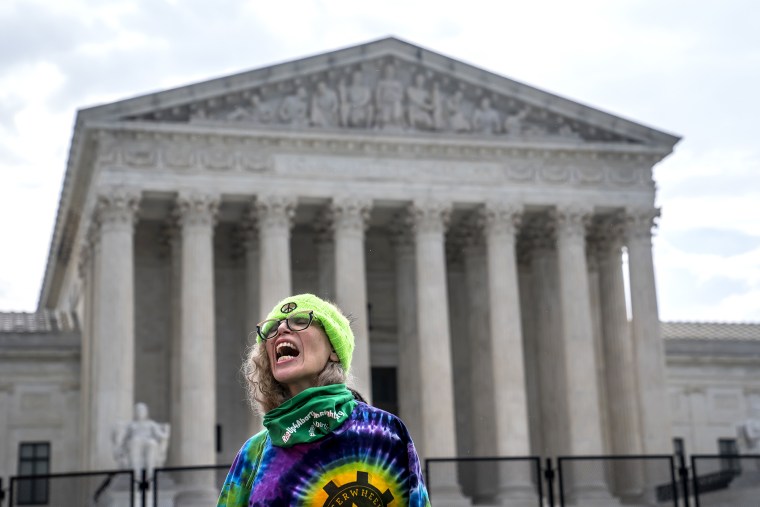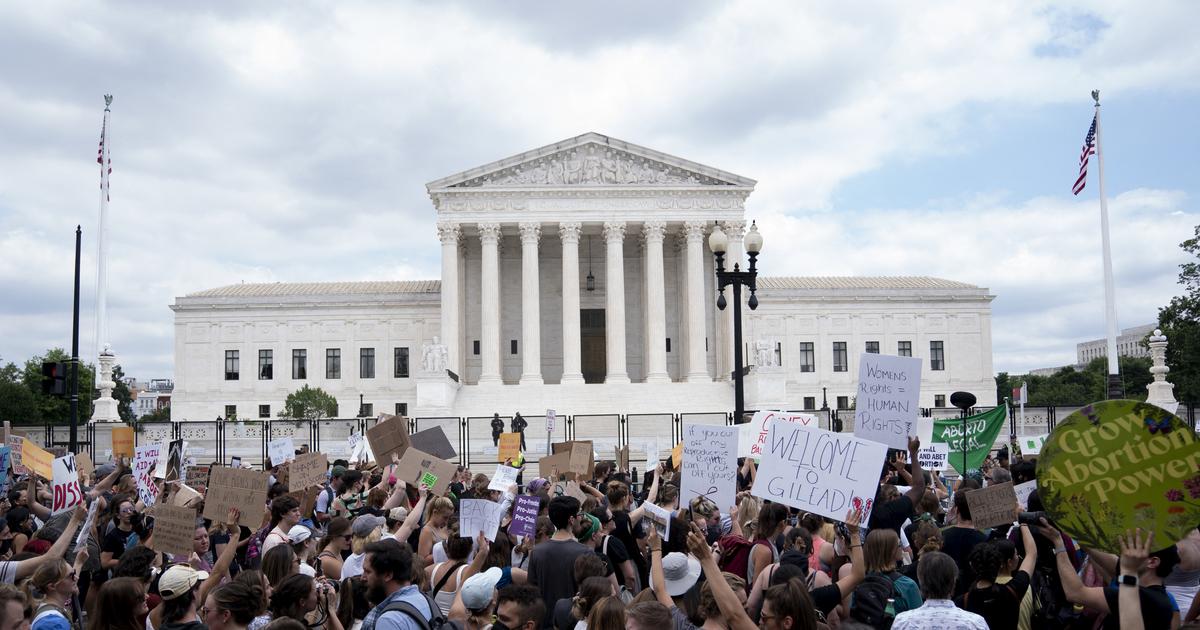The Supreme Court made the historic decision this Friday to annul the recognition of the right to abortion at the federal level in the United States by reversing the Roe v.
Wade, so from now on it will be the states that will decide what legislation to impose in their territory on the interruption of pregnancy.
As emerged from the draft of the verdict leaked by the informative website Politico at the beginning of May, the highest court was inclined to suppress this constitutional right endorsed by its historic opinion since 1973 by 5 in favor and 4 against.
Although there has never been an abortion law in the Constitution, the Supreme Court recognized it nearly 50 years ago as a right in Roe v.
Wade.
In other words, it established that people have the right to choose whether to continue or end their pregnancy.
His ruling this Friday reviews that precedent by analyzing a lawsuit over a 2018 Mississippi law that establishes that in that state you cannot have an abortion beyond the 15th week.
[We debunk 5 myths about abortion in the United States]
The historic verdict
does not mean that abortion is illegal
.
However, there is now no federal protection for access to the procedure.
The debate and battle around the issue thus moves directly to the states, which must decide whether to allow it or not.
This is how experts have anticipated what law in the United States may look like in a post-Roe v.
Wade.
According to an analysis by the Center for Reproductive Rights, abortion
is protected
in more than twenty states by local laws or constitutions, such as in Florida, Main and Illinois, although there are restrictions on performing the procedure (such as a limit of weeks). .
In these places it will remain legal.
Within this group, there are
eight states
that have enacted legislation that expands access to reproductive health services, such as California, Connecticut, New Jersey and New York.
However, it is estimated that almost
half of the states will prohibit or
greatly limit access to the procedure, either because they have laws that automatically take effect with the reversal of Roe v Wade or because they have already tried to restrict the right previously.
Among them are Texas, Louisiana, Mississippi, Arkansas and Oklahoma.
[These are the risks to women's health in overturning Roe v. wade]
The Supreme Court's decision will hit minority communities hard and endanger the lives of millions of people, experts have warned.
“
Latinos would be disproportionately impacted
, as would low-income people and those belonging to the LGBTQ community, by imposing serious risks to their health and becoming a dangerous precedent for other civil protections,” assured the Hispanic Federation when Supreme Court draft leaked.
Who has abortions in the US?
These are the groups that most resort to this right
May 5, 202201:07
The danger of reversing the right to abortion
Experts had warned that reversing the right to abortion would not stop it from being practiced, nor would it reduce its rate.
On the contrary, it
would endanger the lives of millions of women
, mainly those with fewer resources or those who belong to minorities such as Latinas.
[What would the end of Roe v. Wade for access to the abortion pill?]
Since in recent years a large number of states have adopted restrictions that complicate this practice, it has been reported that women who wish to terminate their pregnancy move to other territories where the procedure is more accessible.
An abortion rights activist screams as she is arrested at a protest outside the Supreme Court on June 14, 2022 in Washington DC Nathan Howard/Getty Images
So far, 44 states prohibit abortion after a specific point in pregnancy.
Most take as a criterion the so-called viability of the fetus (the point in pregnancy when a fetus has developed enough to be able to survive outside the womb with medical help), which is calculated to be around 24 weeks of pregnancy.
[Some religions support the right to abortion. Their leaders talk about it]
However, those who cannot afford the expenses involved in traveling to another state seek other methods of abortion, away from a medical setting or in clandestine clinics.
The meaning of Roe v. Wade
The Roe v Wade ruling by the Supreme Court in 1973 marked a before and after in the reproductive rights of women in the United States.
Jane Roe was the pseudonym used by Norma McCorvey, a 22-year-old single, jobless woman who tried to terminate her third pregnancy in 1969 in Texas by claiming she had been raped.
However, state law did not allow it by only protecting women whose pregnancy put her life in danger.
California seeks to be a sanctuary state for women who want to have an abortion
Dec 9, 202102:43
McCorvey, who gave her daughter up for adoption after giving birth, took her case to the Supreme Court and with it to the Dallas County District Attorney, Henry Wade, who prevented her from having an abortion.
After hearing her case and that of Sandra Bensing, a 20-year-old from Georgia with a similar experience to hers, the justices ruled 7-2 that both states did not have the power to ban abortions and that the Constitution protected the right of women to terminate their pregnancy.
[These are the laws on abortion in the rest of the world: in which countries is it easier and which are more restrictive?]
“[The case] Roe was terribly wrong from the start,” Judge Samuel Alito, a member of the conservative majority, said, however, in the draft that anticipated the ruling could be overturned.
"We hold that Roe and Casey should be overturned," he
adds, referring to the 1992 case of Planned Parenthood v.
Casey, who affirmed Roe's case as a constitutional right to abortion services, but allowed states to place some restrictions on the practice.
“It is time to heed the Constitution and return the issue of abortion to the elected representatives of the people.”
"Far from achieving a national consensus on the issue of abortion, they fueled the debate and deepened the division" of society in this regard, he considered.


/cloudfront-eu-central-1.images.arcpublishing.com/prisa/3F3EHAP7NYDCD7NIOIZLOQJFPI.jpg)












